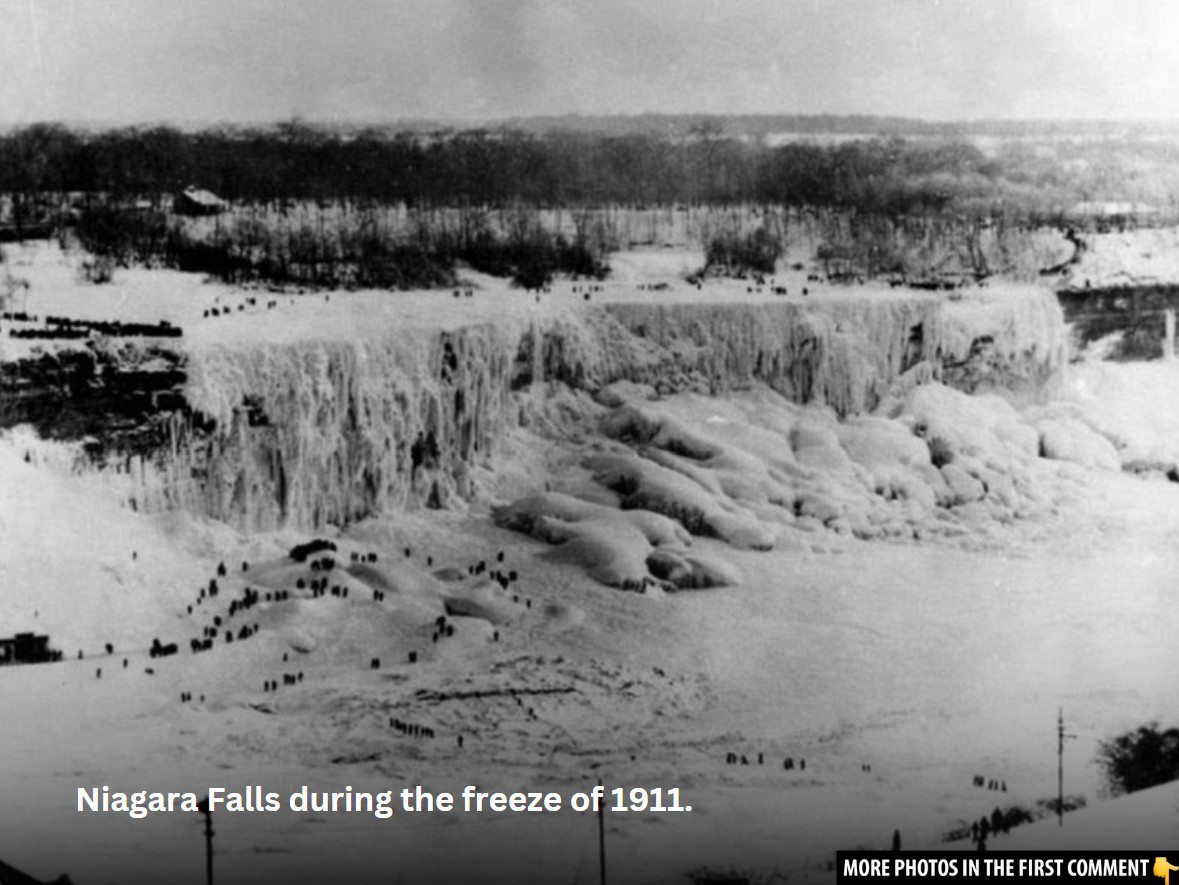Niagara Falls, one of the world’s most iconic natural wonders, draws millions of visitors each year, captivating them with its powerful flow and breathtaking beauty. Yet, few have had the opportunity to witness the falls in its frozen form—a rare and magical sight that only occurs during the harshest of winters. These vintage photographs offer a glimpse into the frozen grandeur of Niagara Falls, captured between the 19th and early 20th centuries. This article explores these historic photos, showcasing the allure and challenges posed by the frozen falls, and delves into the stories behind the iconic images.
The First Recorded Freeze: 1848 & Its Impact
The first recorded instance of Niagara Falls freezing over happened in the winter of 1848. A powerful cold snap caused an ice jam that halted the water flow for over 40 hours. This event, while dramatic, had severe consequences for the local economy, as waterwheels stopped turning, and mills and factories came to a halt due to the lack of power.
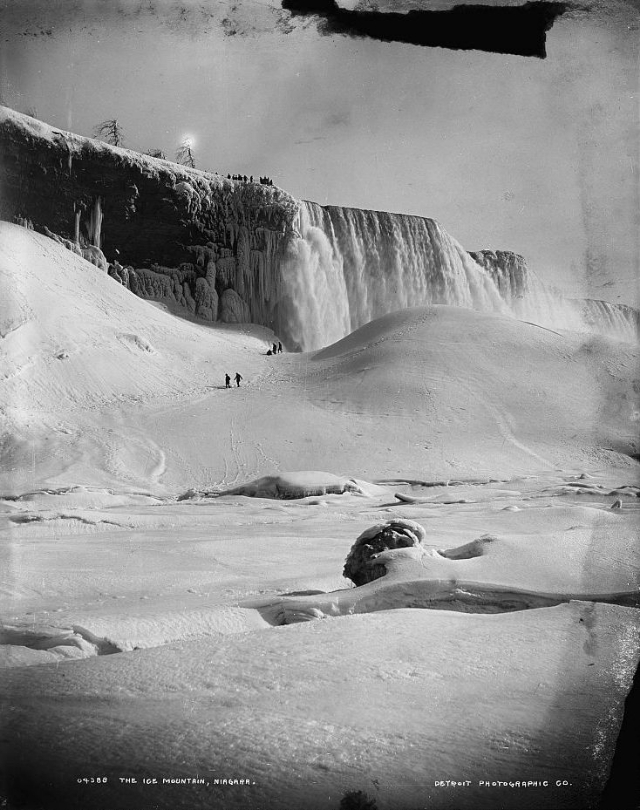
The freeze caused widespread disruption, and it left a lasting mark on the region’s history. The sight of the falls frozen solid was so remarkable that it became a part of the local folklore, and images of the event have since become an iconic part of the falls’ story.
Video
Watch the video “NIAGARA FALLS COLLAPSE” for a dramatic look at a significant event in the history of the falls.
Stunning Photos from the 1880s: George Barker’s Legacy
In the early 20th century, photographers began capturing the beauty of the frozen Niagara Falls in greater detail. Among the most famous collections are those by George Barker, who photographed the falls in the winter of 1911.
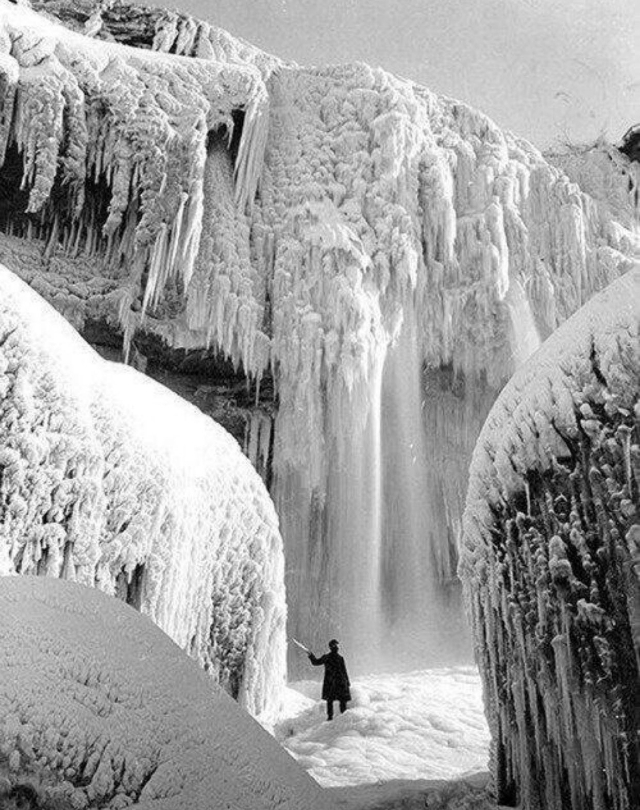
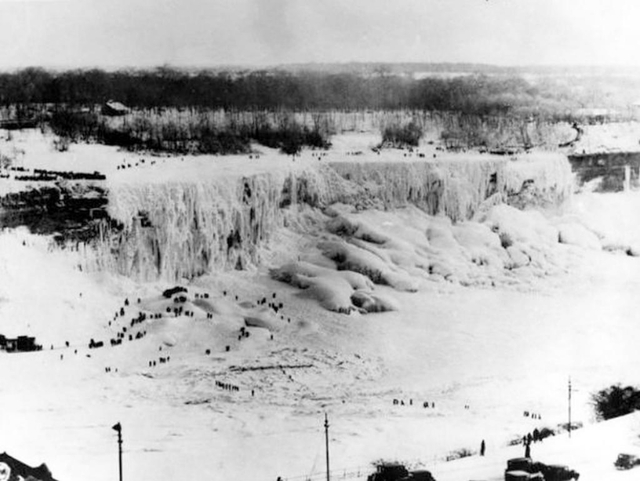
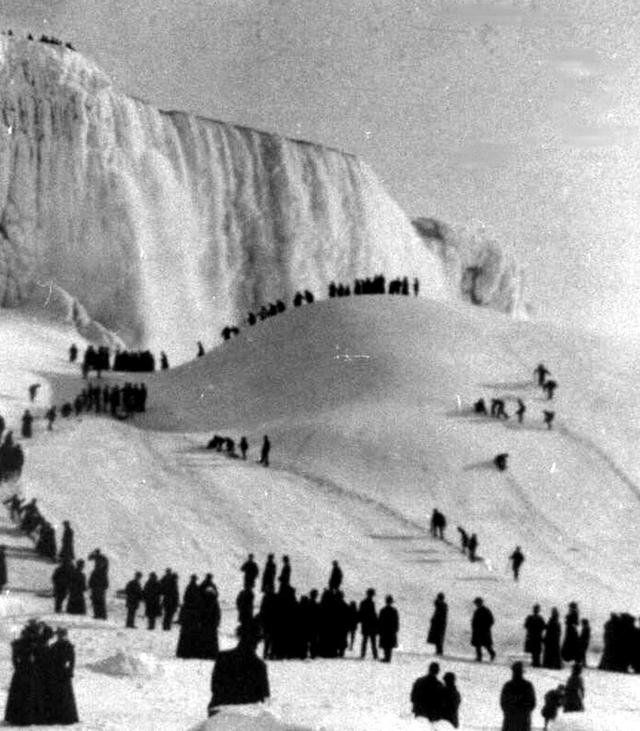
His photos showcase the frozen spectacle from various angles, with massive icicles hanging from the cliffs and chunks of ice floating in the river below. Barker’s photos were widely admired, not only for their aesthetic value but also because they gave viewers a rare glimpse of Niagara Falls in its winter form. His stunning images sparked curiosity and awe, making them popular souvenirs for tourists.
The Ice Bridge Phenomenon: A Symbol of Winter’s Power
Over the years, Niagara Falls became known for its “ice bridges,” formed by thick layers of ice at the base of the falls. These natural structures allowed people to cross the river before permanent bridges were built. Some winters, the ice bridges were up to 100 feet thick, and people would venture out onto the ice for an adventurous crossing.
The most famous ice bridge occurred in 1841, and it became a popular tourist attraction. These bridges were both a symbol of nature’s power and an engineering marvel, as they formed despite the fierce currents of the Niagara River. While most ice bridges were relatively short-lived, they became an important part of the falls’ frozen history.
Tragedy of the Ice Bridge: 1912 Collapse
The ice bridge, once a symbol of adventure, also had a dark side. In 1912, tragedy struck when an ice bridge collapsed while people were still walking on it. The incident, known as the Ice Bridge Tragedy, resulted in three fatalities. This event served as a stark reminder of the unpredictable nature of the frozen falls and the danger posed by the powerful forces of the river and ice. While the ice bridges had been a source of wonder for many, this tragic accident led to increased caution and awareness of the hazards posed by the freezing waters.
The Full Freeze of American Falls: 1912

Another notable event in the history of frozen Niagara Falls occurred in 1912 when the American Falls froze completely. For the first time, the falls were completely still, creating an otherworldly landscape where the once-mighty waterfall turned into an immense sheet of ice. Photographs taken during this freeze show the massive ice formations that enveloped the falls, creating a scene of incredible beauty. The full freeze of the American Falls was a rare event, and it remained one of the most significant freezes in the history of the falls.
Other Notable Freezes: 1902, 1906, 1932, 1936, and Beyond
While the 1912 freeze was the most dramatic, Niagara Falls continued to freeze in various degrees throughout the 20th century. Notable freezes occurred in 1902, 1906, 1932, and 1936, each producing breathtaking photos of the falls in their icy state. The frozen falls were a photographer’s dream, with ice-covered cliffs, mist rising into the air, and the river transformed into a shimmering sheet of ice. These freezes were a rare phenomenon but occurred often enough to inspire continued fascination with the frozen beauty of Niagara Falls.
Erosion Control Efforts: Preserving the Beauty of Niagara Falls

While the frozen beauty of Niagara Falls captivated visitors, the falls were also subject to the forces of erosion. Erosion control efforts have been in place for years to protect the natural wonder from further degradation. In 1969, the Niagara River was temporarily diverted to study the riverbed and strengthen the foundations of the American Falls. These efforts helped preserve the falls and prevent further erosion, ensuring that future generations would be able to witness the majestic power and beauty of Niagara Falls. Despite the many challenges posed by natural forces, the falls continue to stand as a symbol of nature’s resilience.
Gallery: A Collection of Vintage Photos Capturing the Frozen Niagara Falls
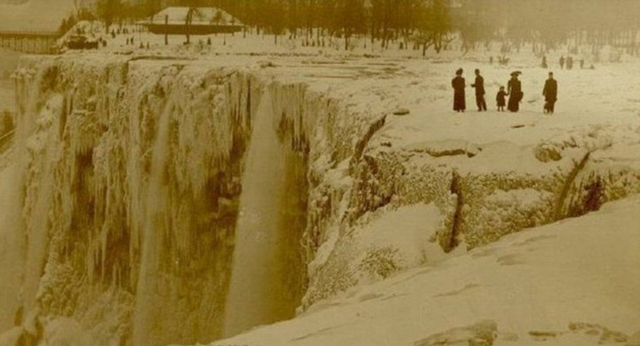
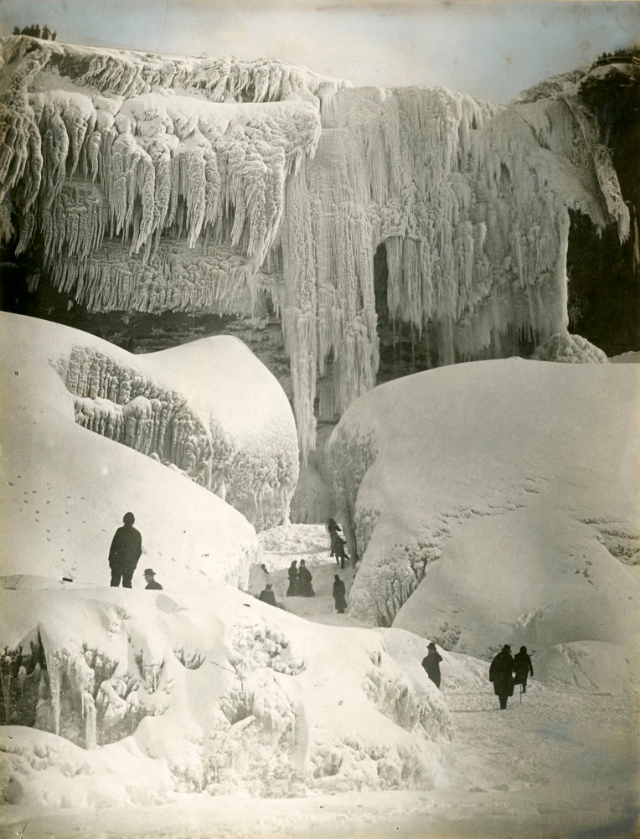
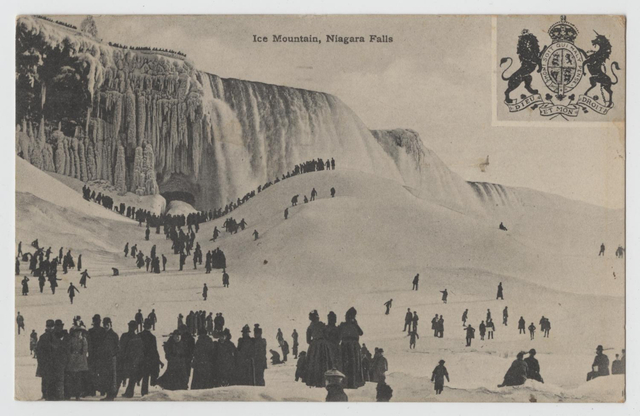
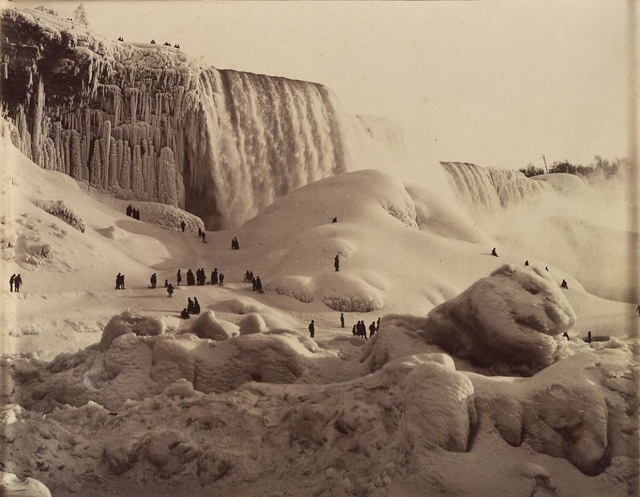
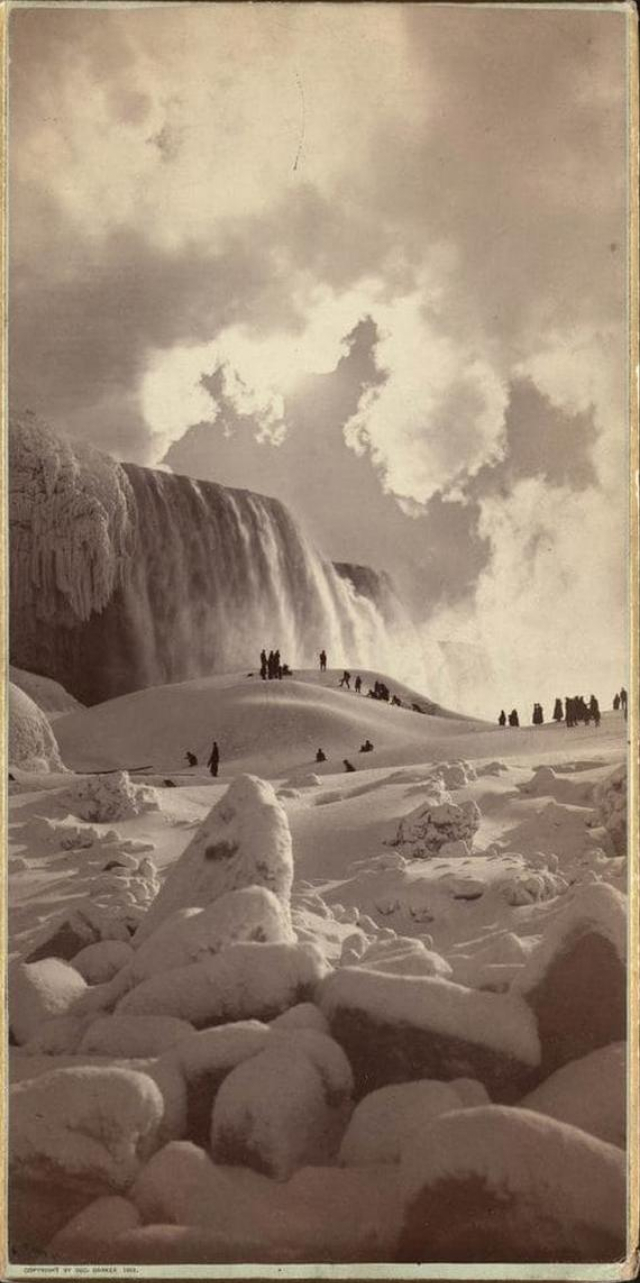
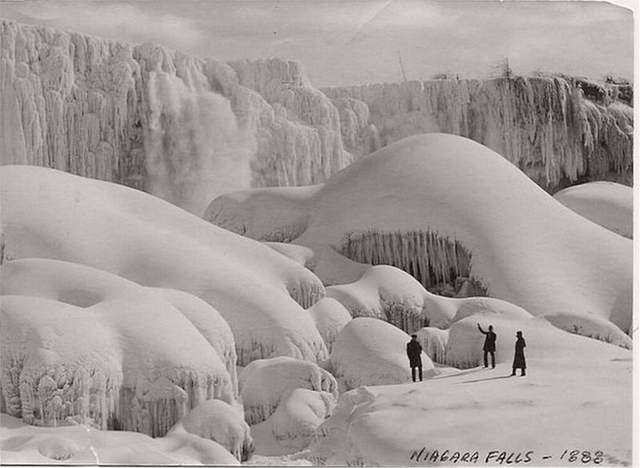
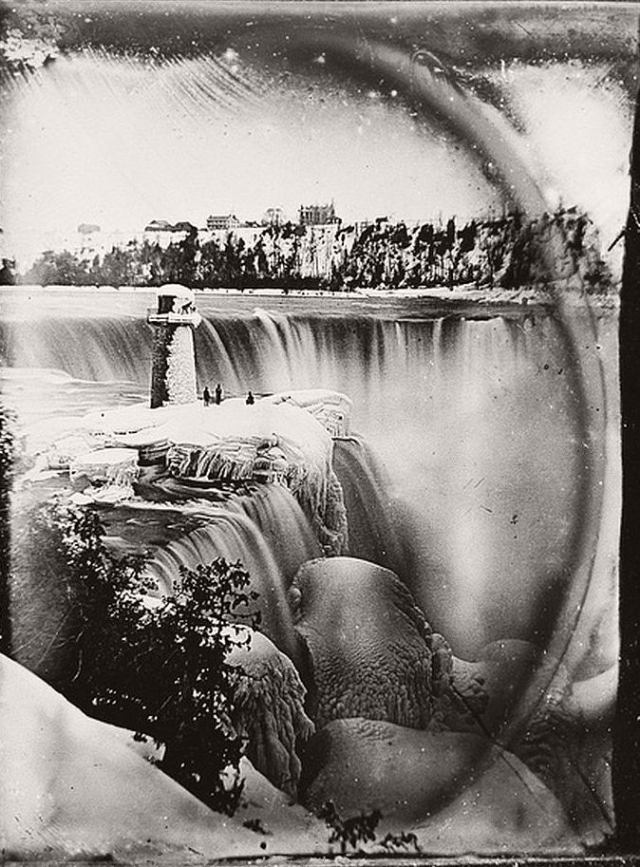
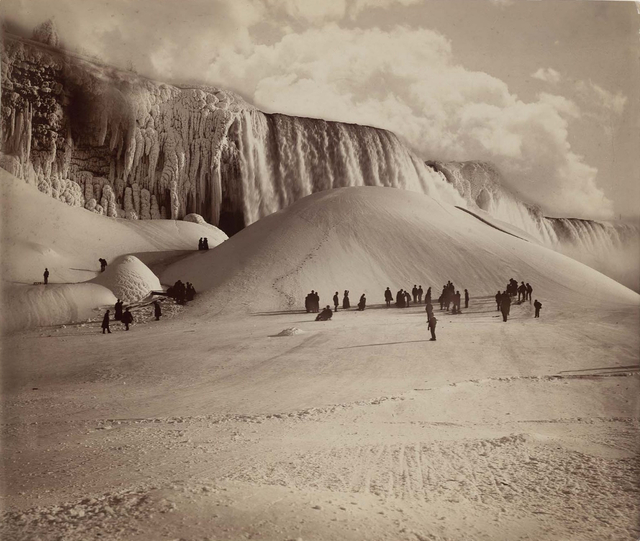
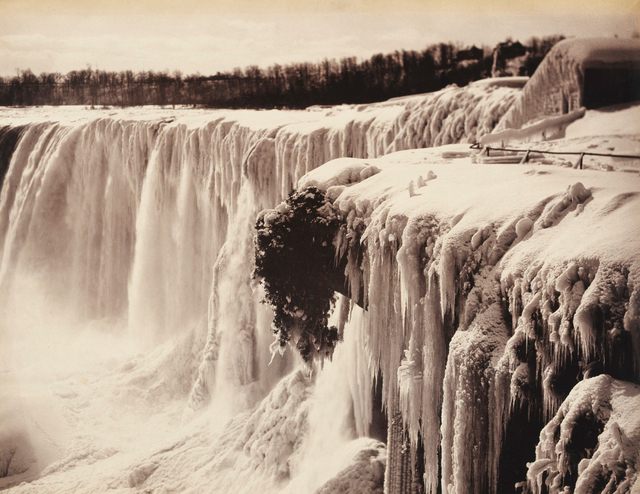

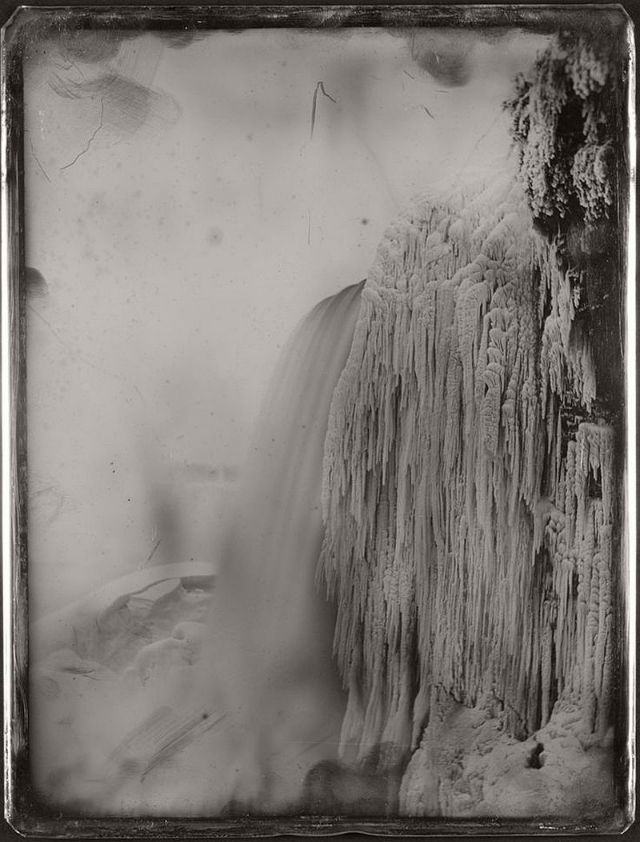
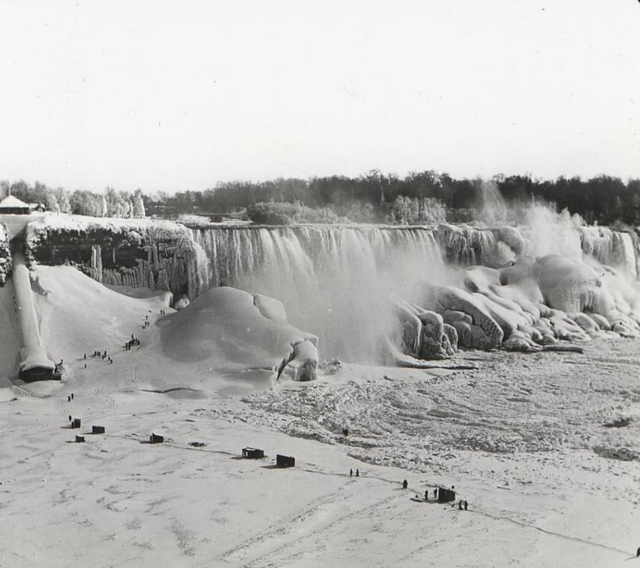

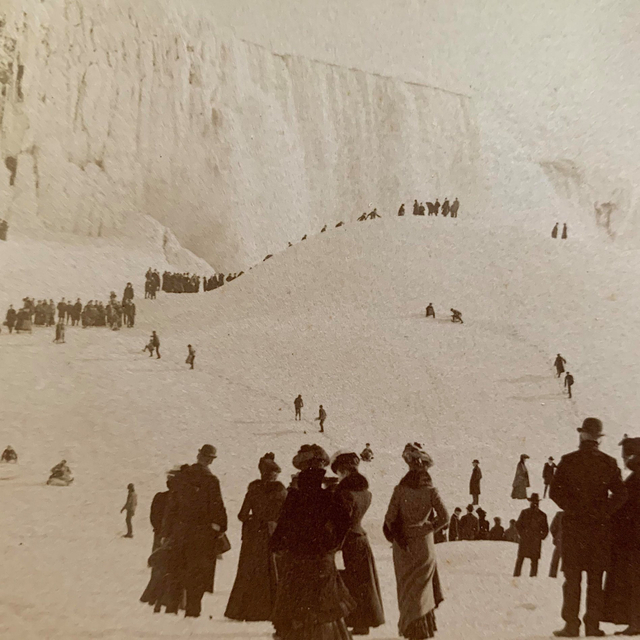

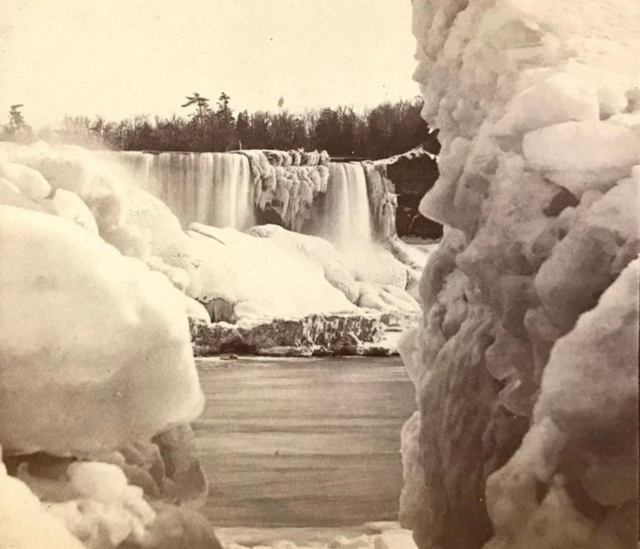
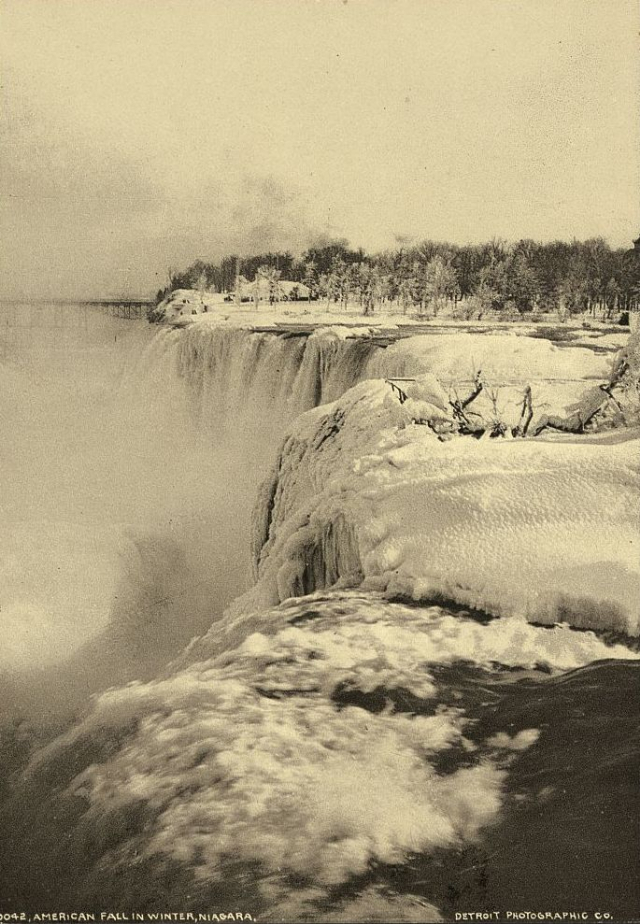
Video
Watch the video “What If You Fell Into Niagara Falls?” for an exploration of what would happen in such an intense scenario.
Conclusion: The Enduring Allure of Frozen Niagara Falls
The frozen Niagara Falls remain one of the most mesmerizing sights in the world, and the historic photos captured during the late 19th and early 20th centuries continue to inspire awe and admiration. These photographs offer a glimpse into a unique and fleeting moment in time when nature’s icy grip transformed the mighty falls into a wonderland of ice. While the falls no longer freeze in the same way, the photographs captured during those rare freezes serve as a testament to the beauty and power of Niagara Falls. As we look back on these stunning images, we are reminded of the timeless allure of Niagara Falls—whether frozen or flowing—standing as a true marvel of nature.
